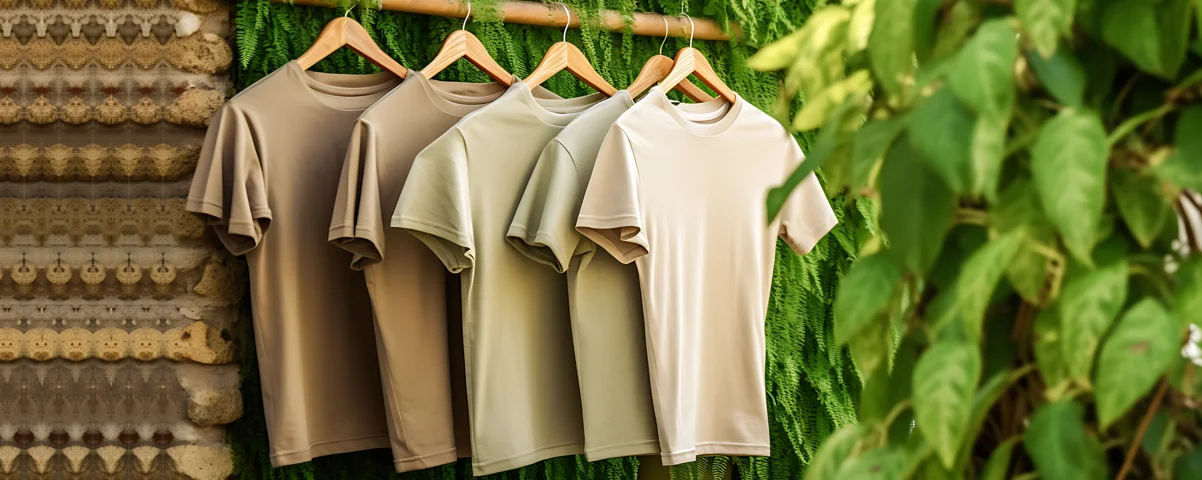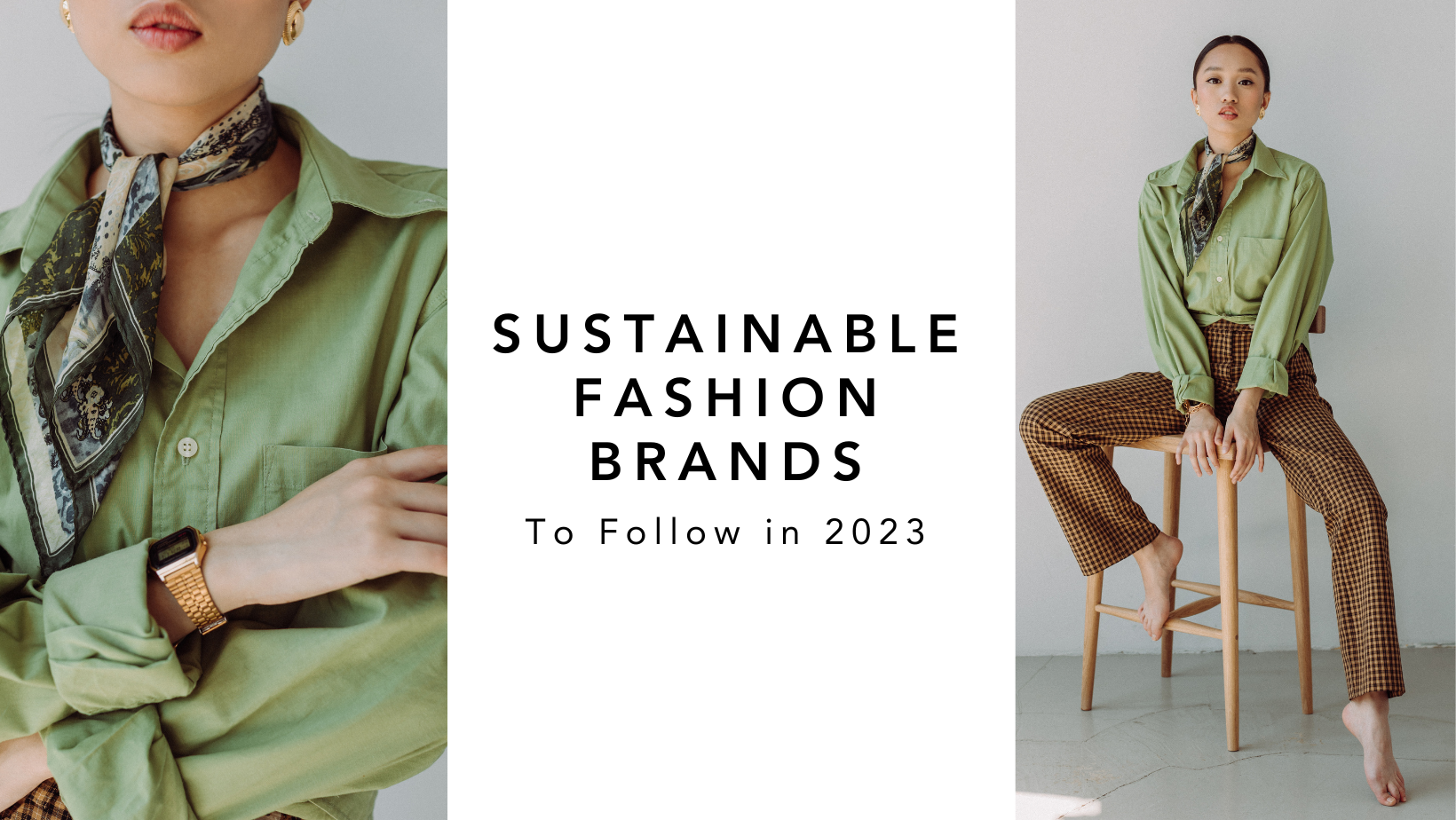How Cape Town Sustainable Fashion is Shaping Eco-Conscious Shopping
How Cape Town Sustainable Fashion is Shaping Eco-Conscious Shopping
Blog Article
Remain Ahead of the Curve by Discovering Cutting-edge Style Patterns
In a market as dynamic as fashion, remaining in advance includes greater than just following current fads-- it requires an exploration of development. Smart textiles, as an example, are changing garments right into practical masterpieces, while 3D printing is revolutionizing layout procedures with its adjustable, waste-reducing capabilities. As sustainability comes to be a keystone, advancements like green products and circular style methods are reshaping ecological obligation - Cape Town Sustainable Fashion. Additionally, the merging of modern technology and style declares a brand-new age of customer interaction. How, after that, can these emerging fads redefine the future of fashion, and what effects do they hold for brands looking for to prosper in this developing landscape?

Embracing Smart Textiles
Over the last few years, the garment industry has actually witnessed a transformative shift with the integration of clever textiles, an innovative technology that mixes technology with fabric. This evolution represents not only a combination of appearances and capability but also a significant leap in the direction of sustainability and customization in vogue. Smart textiles, also called e-textiles, installed innovative electronic devices such as sensing units and conductive strings within the material, allowing garments to engage with the environment or the wearer.
These fabrics are made to keep an eye on physical criteria, such as heart rate or body temperature level, offering real-time health analytics. Past health applications, clever textiles are also being used for adaptive clothing, which can change shade or pattern in reaction to environmental stimulations, hence using a dynamic style experience.
In addition, the advancement of energy-harvesting textiles that create power from movement or sunshine is paving the way for self-dependent wearable innovation. This development is appealing to environmentally conscious customers and designers intending to decrease the ecological impact of fashion. As r & d in this field breakthrough, wise textiles are anticipated to become significantly common, reshaping the landscape of contemporary fashion with their multifunctional capacities.
The Rise of 3D Printing
Changing the manufacturing landscape, 3D printing has actually emerged as a game-changer in the garment industry. This cutting-edge innovation has made it possible for designers to press the limits of creativity, generating elaborate and personalized garments that were formerly unthinkable. By leveraging electronic design and additive production, 3D printing facilitates the development of intricate geometries and patterns, allowing developers to experiment with new appearances and structures.
A significant benefit of 3D printing in fashion is its ability to produce on-demand, lessening waste and lowering inventory requirements. This performance not just optimizes production procedures but likewise enables quick prototyping, enabling designers to bring their visions to life in a much shorter duration. In addition, 3D printing supports modification somewhat unparalleled by traditional techniques, supplying personalized fits and distinct layouts customized to individual consumer preferences.
The rise of 3D printing has actually likewise equalized fashion, making it obtainable to arising designers that can now make high-grade items without substantial monetary investment in conventional manufacturing facilities. As innovation remains to development, the fashion business is poised to harness the full potential of 3D printing, checking out new materials and techniques that will unquestionably redefine exactly how fashion is conceived and generated.
Lasting Style Advancements
As the fashion industry grapples with the pushing demand for ecological obligation, sustainable fashion technologies have actually emerged at the forefront of transformative adjustment. The expanding understanding of ecological impact has actually sustained a shift in the direction of even more eco-conscious practices and products. Developers and brands are now focusing on sustainability, integrating techniques that minimize waste and lower carbon footprints.
One significant growth is the rise view of circular style, which highlights recycling and upcycling to expand the lifecycle of garments. This method not just reduces waste however additionally encourages consumers to take on a much more conscious approach to garments intake.
Another development exists in the adoption of ingenious dyeing strategies that utilize all-natural dyes or waterless procedures, consequently lowering the large amounts of water and chemicals traditionally utilized in fabric dyeing. In addition, developments in biotechnology have caused the production of lab-grown natural leather and fabrics, providing environmentally friendly and cruelty-free options to traditional products. With these introducing initiatives, the apparel industry is making purposeful strides towards a more sustainable future.

Tech-Integrated Garments
Tech-integrated garments stands for a revolutionary combination of fashion and modern technology, reshaping exactly how individuals connect with their garments. This ingenious domain is noted by the inclusion of clever fabrics and embedded electronic elements, enhancing both capability her response and aesthetic appeal. From health and fitness trackers embedded in sports apparel to heated coats managed via smart device applications, tech-integrated clothing offers consumers unmatched benefit and versatility.
Introducing brand names are driving this trend, concentrating on creating garments that reply to ecological stimulations or individual commands. For circumstances, some garments can transform shade or pattern in action to temperature level shifts, while others integrate biometric sensors to monitor health metrics like heart price or stress and anxiety degrees. The smooth combination of technology into fabrics additionally encompasses environmental sustainability, with efforts to establish self-cleaning fabrics or garments that get used to weather problems, therefore reducing the need for numerous layers.
In addition, the development of wearable innovation is not just limited to apparel yet reaches accessories like watches and glasses, additional broadening the extent of tech-integrated fashion. As the market continues to introduce, the capacity for modification and customization in apparel expands, providing consumers special, tech-enhanced style experiences that cater to their individual requirements and preferences.
Future of Virtual Style
In recent years, the future of digital fashion has actually become a transformative pressure within the market, leveraging improvements in digital modern technology to redefine just how style is produced, experienced, and eaten. By integrating augmented fact (AR), virtual truth (VR), and 3D style devices, designers can currently craft immersive and interactive experiences that go beyond typical fashion borders. Virtual fashion permits for the creation of garments that exist exclusively in electronic atmospheres, supplying limitless possibilities for advancement without the constraints of physical production.
This electronic change not only provides possibilities for imaginative expression but also addresses sustainability problems inherent in conventional style techniques. Cape Town Sustainable Fashion. By eliminating the requirement for physical sources, digital style lowers waste and minimizes carbon footprints. Furthermore, the increase of online style straightens with the raising consumer demand for one-of-a-kind and customized experiences, as digital garments can be tailored and tailored to individual preferences easily

Conclusion
The style industry's future lies in the combination of ingenious modern technologies and sustainable methods. Online style is positioned to redefine consumer interactions.
In recent years, the style sector go now has actually witnessed a transformative shift with the integration of wise fabrics, an advanced advancement that mixes modern technology with textile.As the style sector grapples with the pushing need for environmental responsibility, sustainable style advancements have actually arised at the center of transformative adjustment.In recent years, the future of online fashion has emerged as a transformative force within the market, leveraging improvements in electronic modern technology to redefine exactly how style is produced, experienced, and taken in. The increase of virtual fashion aligns with the enhancing consumer demand for unique and personalized experiences, as virtual garments can be tailored and customized to private preferences with ease.
The style market's future lies in the assimilation of lasting practices and cutting-edge innovations.
Report this page